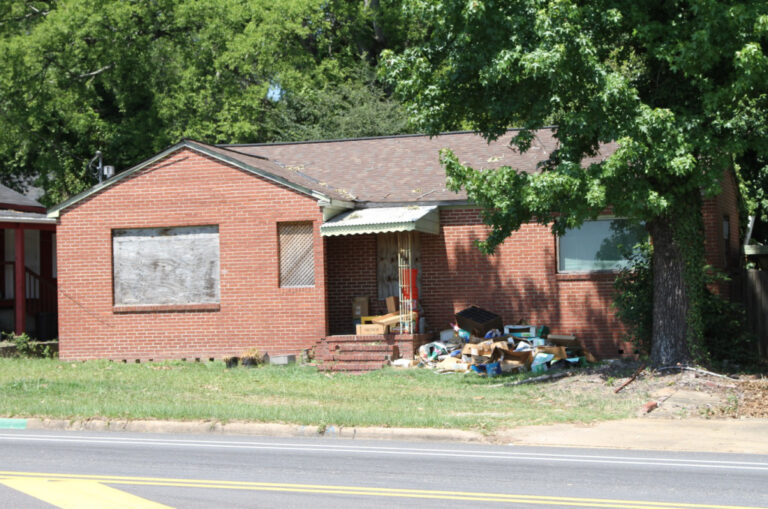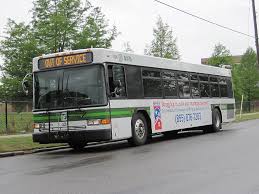Physical Address
304 North Cardinal St.
Dorchester Center, MA 02124
Physical Address
304 North Cardinal St.
Dorchester Center, MA 02124

1. This week at Market Urbanism Buses and Trains: The Turtle and the Hare? by Asher Meyers With buses a relatively safe, cheap and green form of travel, the wisdom of the government favoring trains at great public expense is dubious. This isn’t to say that trains are bad and buses are good—to each his own. But given the trade-offs involved, buses cannot be dismissed as inferior and obsolete—in the real world, budgets are limited and prices matter, so a small sacrifice of time and comfort is worth the savings. Parking Requirements Increase Traffic And Rents. Let’s Abolish Them. by Brent Gaisford Let’s get rid of parking minimums and allow new apartments to be built either without parking, or the reduced amount of parking preferred by developers. People without parking are less likely to drive, and less driving means less traffic. Plus, we’ll be one step closer to reducing our stratospheric rents. 2. Where’s Scott? Scott Beyer is in Austin. His two Forbes articles this week were about how Washington, DC’s Zoning Regulations Target ‘Fast Casual’ Restaurants and Tokyo’s Affordable Housing Strategy: Build, Build, Build The city had 142,417 housing starts in 2014, which was “more than the 83,657 housing permits issued in the state of California (population 38.7m), or the 137,010 houses started in the entire country of England (population 54.3m).” Compare this with the roughly 20,000 new residential units approved annually in New York City, the 23,500 units started in Los Angeles County, and the measly 5,000 homes constructed in 2015 throughout the entire Bay Area. Scott’s previous article on Austin’s rail transit, already well-cited by local media, got additional coverage in the American Spectator. 3. At the Market Urbanism Facebook Group: Adam Hengels on Stark Truth Radio with Robert Stark Ahmed Shaker posted videos of pedestrian and street traffic in […]

1. This week at Market Urbanism Does Home-sharing Create Negative Externalities? by Michael Lewyn Homeowners’ fear of being overrun by “transient” renters is based on an outmoded picture of urban life. In a rural area where most people are born and die in the same town, a fear of “transients” may make sense- but urban life is already highly transient. In renter-dominated blocks, people move in and out every year, so transience is already the norm. 2. Where’s Scott? Scott Beyer has, starting tomorrow, one week left in Austin. Tomorrow he’s visiting the southwestern Texas town of San Angelo. His two Forbes articles were about a Houston builder constructing the nation’s largest micro-unit project and Why Austin Needs to Unleash Sixth Street These noise complaints follow the same rationale as complaints now routinely made about new housing, offices or retail. That is, people move into urban areas thinking they will enjoy the benefits of greater density and culture; but when those qualities prove inconvenient, they try to squelch them. Scott’s work was also splashed all over Austin’s local news this week. He did two TV appearances–to discuss the city’s rail transit line and safety on sixth street–and was cited about these issues in the Austin American-Statesman, the Austin Business Journal, Curbed Austin and Austin.com (among other publications). 3. At the Market Urbanism Facebook Group: Ahmed Shaker reports his experiences of Chuadanga, Bangladesh and finds it dense, bustling, full of mixed-uses, and private transportation options are plentiful. Shanu Athiparambath wrote Why Do People Love Their Cities But Hate Urban Living? Todd Litman wrote: Funding Multi-Modalism at Planetizen via Rocco Fama and Christopher Robotham: Donald Shoup and Aaron Renn on the City Journal podcast via Mark Frazier: Does Elon Musk Understand Urban Geometry? via Matt Robare: City taxes as urban growth policies: choosing the taxes that get you […]

1. This week at Market Urbanism Does President Obama Have A ‘Regionalism’ Agenda? by Scott Beyer Such policies represent less a turn towards socialism, than one away from the nation’s existing socialized paradigm favoring suburbs, wherein housing regulations restrict dense infill development, while the public foots the costs of state highways, local roads, and other sprawl infrastructure. Obama, for all of his supposedly urban bias, has not been immune to extending this paradigm; for example, his stimulus package, writes economist Ed Glaeser, disproportionately benefited low-density states with low unemployment. 100 Years After Zoning In New York City, Government Dominates Land Use by Vince Graham Zoning is segregation – not only of land uses deemed incompatible, but of people deemed “undesirable.” Progressives behind New York City’s 1916 zoning ordinance regarded immigrants moving into northern cities from Europe and the South as “undesirable.” NIMBYs Outdo YIMBYs In Organizing Ability by Krishan Madan The reason boils down to the classic problem of concentrated costs and dispersed benefits: the beneficiaries of new housing are scattered, while those who benefit from a housing shortage–and thus higher prices–are concentrated. These organizational skills enable NIMBYs to dominate the discussion. 2. Where’s Scott? Scott Beyer spent his 3rd week in Austin. His two Forbes articles were Dallas And Houston: Centers For Economic Development and Austin’s Commuter Rail Is A Monument To Government Waste In 2014, the rail line had an operating deficit of $12.6 million. The upfront capital costs of $140 million, when amortized at 2% over 30 years, creates an additional $6.2 million annual cost to taxpayers. Add these two sums up, and then divide them by the line’s number of annual unlinked trips—763,551—and the per-trip subsidy works out to $24.62. 3. At the Market Urbanism Facebook Group: A Market Urbanism podcast with Nolan Gray? Yes, it’s coming, and some hints leak […]

1. This week at Market Urbanism Quantifying the effects of California zoning rules by Emily Hamilton Kip Jackson finds that California zoning rules and other land-use restrictions not only reduce the growth rate of new housing stock, but a new regulation can actually be expected to reduce the existing stock of housing by 0.2% per year. This correlation is greatest when looking only at multifamily buildings, where each new restriction results in 6% fewer apartments built annually. Tech for Housing: An Experiment in YIMBY Activism by Jeff Fong We want to make participation in land use reform a conspicuously consumable good within Bay Area tech. We want everyone within tech to identify as YIMBY by default and for that reflexive self-identification to tip the scales of everyone’s internal cost benefit analysis in favor of having an articulable opinion and taking minimal actions like sending a letter, signing a petition, or casting a vote. 2. At the Market Urbanism Facebook Group: Shanu Athiparambath wrote, Elevators are a Mass Transit System Adam Millsap wrote, Recessions Don’t Have The Same Impact On Every City Shanu Athiparambath wrote, Zoning Is Unjust, Anti-Poor & A Cause of Inequality via Tobias Cassandra Holbrook: Cash-Strapped Towns Are Un-Paving Roads They Can’t Afford to Fix via Vinay Natu, “Man behind charter cities – Paul Romer, named for Chief Economist, World Bank“ via Melanie Meharchand, “The Coastal Commission wrote a letter chiding the City of Laguna Beach for its overly-restrictive regulations on short-term rentals.” via Nolan Gray, “Hard to tell who’s more irritating here, the weirdo utopian schemers or the petty narrow-minded NIMBYs:” A Mormon Tycoon Wants to Build Joseph Smith’s Mega-Utopia in Vermont via Roger Valdez: Renting in Seattle? City could put a cap on your move-in fees via Matt Robare: The Tyranny of Free Parking via Jake Thomas: Housing […]
1. This week at Market Urbanism Nick Zaiac contributed his first Market Urbanism piece: The Cato Institute Goes After Arbitrary Historic Preservation Laws between municipalities they can vary, depending on the precedents set by different circuit courts. Now the Cato Institute, a libertarian Washington think tank, is filing a brief that aims to bring consistency to these laws nationwide. Your Town Is A Financial Timebomb by Johnny Sanphilippo: Do your best Ross Perot imitation and say the words, “sucking sound.” The primary difference between the older development pattern and the stuff that’s being built today has to do with the ratio of public investment vs. private value. Downtown and the adjacent residential areas are mostly small-scale, compact, multi-story buildings with a minimum amount of roads, pipes, and wires connecting them. The new stuff is overwhelmingly huge roads, attenuated water and sewer lines, endless cables and a tremendous amount of surface parking and grass. 2. Where’s Scott? Scott Beyer spent his first week in Austin, and this weekend will visit the city’s northern suburbs, including Cedar Park, Round Rock and Georgetown. His Forbes article this week was about how Miami’s Parking Deregulation Will Reduce Housing Costs While Frey was unsure yet about what kind of rents the building would command, he estimated that building structured parking–in this case 12 spaces, under the previous regulations–would have cost $300,000, or $25,000 per space. This, he said, would have added roughly $330 per month to average rents 3. At the Market Urbanism Facebook Group: Sandy Ikeda spoke about Jane Jacob’s legacy at the Museum of Eldridge Street alongside Mindy Fullilove and Ron Schiffman. Sandy asked the MU group for some clarification on statements made at the event by Ron Schiffman, an urban affairs scholar at the Pratt Institute. After some interesting dialogue, Sandy concludes Schiffman likely misused terms. David […]

I keep up with the reports and journalists proclaiming that America’s suburbs are thriving and will continue to do so forever. Yet I keep scratching my head since these depictions are in conflict with what I keep seeing on the ground as I travel around the country. The folks who declare the permanent triumph of suburbia must live in the prosperous enclaves near the lake and golf course, not the poorly aging subdivisions that are rapidly losing value and becoming reservoirs for the downwardly mobile former middle class. There’s absolutely nothing wrong with any of these homes, but here they are boarded up as the entire neighborhood slowly slides into decline. If the 1950’s subdivisions are looking dogeared you should check out the older neighborhoods from the early twentieth century. They’ve been neglected even longer and the collective deferred maintenance shows. I checked the real estate listings in this Georgia town and many of these homes can be bought for as little as $20,000. The average price seems to be closer to $40,000 or $50,000. Here’s one of the problems. This town has enjoyed a suburban building boom for the last few decades. These new homes are part of one of the better new communities being built on the far edge of town. These are desirable places to live and people who can afford to move here do so. Homes here are offered for between $350,000 and $500,000. But this region has a steady population. The number of people in the area has been increasing very slowly even as the number of new homes and commercial buildings continues to ramp up at a heady pace. There’s a direct connection between the impoverishment of the empty homes in the older parts of town and these new developments way out on the […]
1. This week at Market Urbanism Do The Rich Cause High Rents? by Michael Lewyn One common argument against building new housing is that new construction will never reduce housing costs, because the influx of ultra-rich people into high-cost cities creates an insatiable level of demand. ReasonTV on SF’s YIMBY Movement (a video by ReasonTV) Have you ever had the experience of trying to stuff a lot of stuff in the suitcase? Have you ever gone to a party and seen that the pizza is gone, but you still wanted some? It’s just running out. And they know that we have run out [of housing in San Francisco]. How Realistic Are The Cities Of Fallout? by Nolan Gray Sacred sites—whether in the form of a shrine or a megaton bomb—play an essential role in early human urbanization, both in Fallout 3 and the real world. As the historian Lewis Mumford points out in The City in History, the dead are the first humans to take up stationary residence. Y-Combinator, Tech, and “New Cities” by Adam Hengels A society where housing and the components of vibrant cities are abundant and affordable is a vision worth striving towards. As is a society where disputes are resolved speedily in a bottom-up fashion. In many ways, the technology sector is already on a path to make that happen – they just may not yet realize it yet. 2. Where’s Scott? Scott Beyer is in Dallas, and will spend this weekend visiting small west Texas cities like Wichita Falls, Lubbock and Abilene. This week he wrote 5 articles–one for Governing Magazine making the Case for Cities to Outsource Economic Development; and 4 for Forbes–The Explosive Northern Growth Of Metro Dallas…Boulder, CO: Another Desirable But Over-Regulated U.S. City…On Urban Housing Issue, Liberals And Conservatives Talk Past Each Other…and What Is A […]
1. This week at Market Urbanism Brent Gaisford contributed Lack of New Housing On The Westside Is Causing Gentrification Of East And South LA There are a lot of reasons for gentrification, but the lack of new housing on the Westside deserves a lot of the blame in recent years. As we’ve discussed, social and economic changes are pulling new people into LA, many of them young and affluent. A lot of those new people would probably like to live on the Westside, but we aren’t building any places for them to go. 2. Where’s Scott? Scott Beyer flew back Monday from Boulder to Dallas. The most surprising thing he found about the YIMBY conference was how dramatically the fight for land-use deregulation has become a progressive cause. Almost everyone there identified as liberal, and was representing cities like New York, San Francisco, Portland, Los Angeles and Seattle. This growing bipartisan consensus around zoning reform is a subject Scott will soon cover for Forbes. 3. At the Market Urbanism Facebook Group: Jeff Andrade-Fong introduces a new YIMBY org: Tech for Housing Roger Valdez at Forbes: Seattle Mayor’s Affordability Scheme Is More Politics, Less Helpful Change Roger Valdez at Smart Growth Seattle: Lot Suit: City’s Motion to Dismiss Fails, Compares Housing to Porn, Drugs Adam Milsap‘s latest at Forbes: Los Angeles’ New Manufacturing Hub Won’t Generate Innovation Krishan Madan is curious how to respond to arguments that new housing burdens local schools via Nolan Gray: Why the elevator could be the next great disruptive technology by Matthew Yglesias via John Morris: Are artists abandoning NYC? (audio) Jedediah Mackenzie Weeks wants to know what Market Urbanists think of Baltimore‘s Port Covington redevelopment proposal via John Morris: Local Businesses Clash with the City of Portland Over Major Thoroughfare’s Road Diet Bob McGrew wants to hear […]

Every form of transportation has some unique considerations. Car drivers worry a great deal about parking near their destination–a consideration bus riders don’t need to think about. But, as transit consultant Jarrett Walker has written about, some considerations are universal. As Uber and Lyft have added carpool services, some people have noted that they can learn from traditional transit: https://twitter.com/jacksmithiv/status/635925087640793088 But what lessons go in the opposite direction? What can transit learn from Uber? LESSON 1: PAYMENT CONVENIENCE MATTERS When you get in an Uber, you don’t pay fare like you do on a bus. You just start moving. When you reach your destination, you don’t fumble for cash and wait for change like you do in a taxi. You just get out. This may seem like a small detail, but Uber riders frequently cite this convenience as giving the service a magical feeling. For the driver, the less time she spends accepting payment, the more time she can spend getting people around. Buses too can use off-board payment systems to relieve passengers of the headache of fumbling for their fare and waiting on 50 other passengers to each find and pay exact change. Typically, passengers get a proof of payment and fare inspectors will check a fraction of rides, much like meter inspectors check a fraction of parking meters. LESSON 2: THERE’S NO SUCH THING AS ENOUGH CUTTING WAIT TIMES With much fanfare, Austin introduced bus services that come every 15 minutes at peak times and every 20 minutes off-peak. For Uber, by contrast, a passenger waiting 15 minutes for service is considered a failure. Downtown pickup frequency was often under 3 minutes and even then, Uber still worked hard to cut wait times down. The company endures a huge amount of negative media and customer sentiment for “surge pricing,” all to make sure that whenever and wherever a passenger requests a car, one will show up in a couple minutes. At $1.25 to $2.50 per ride and […]

1. This week at Market Urbanism Shane Phillips points the finger to a major culprit in LA‘s affordability problems: Keep Los Angeles Affordable By Repealing Proposition U Of the 29,000 acres zoned for commercial and industrial uses throughout LA, 70 percent saw their development capacity sliced in half, from a floor-area ratio (FAR) of 3.0 to 1.5. Since the city allows housing to be built in many of these zones, it didn’t just mean less office, retail, and manufacturing space, but fewer homes as well. Emily Washington contributed to New Urbs at The American Conservative: Family-Friendly Cities Start With Schools But where I depart from Schwarz is that public policy, not economic forces or renter preferences, is largely responsible for the lack of children in American cities. Specifically, education policy. 2. Where’s Scott? Scott Beyer took a writing break this week to wander around Texas, visiting the towns of Cuero, Victoria, Corpus Christi, Kingsville, Brownsville, McAllen, and the Mexican border city of Reynosa. He has since returned to Dallas, and will be flying this week to Boulder, CO, for the first annual YIMBY conference. Tickets for the event are still available. 3. At the Market Urbanism Facebook Group Alden Wilner creates a Wikipedia stub for Market Urbanism, Russ Nelson adds to it. We’d love to see the hive mind expand the page! Adam Millsap‘s latest: What The Boom And Bust Of Williston, ND Teaches Us About The Future Of Cities via Jonathan Coppage at New Urbs: Rescue Cities for Families Shanu Athiparambath wrote, Indian Cities Need Private Fire Stations Matt Robare sums up the Massachusetts zoning reform, which passed the Senate Alex Bernstein wants to know the best objective and unbiases books to start reading Asher Meyers suggest the benefit of Universal Basic Income extends to urban issues based on Charles Murray‘s editorial […]